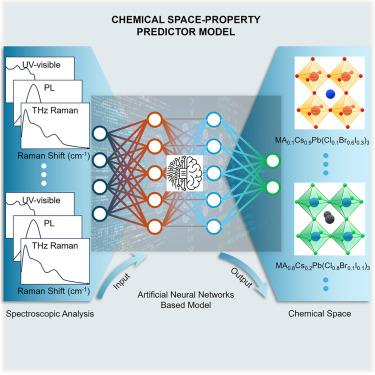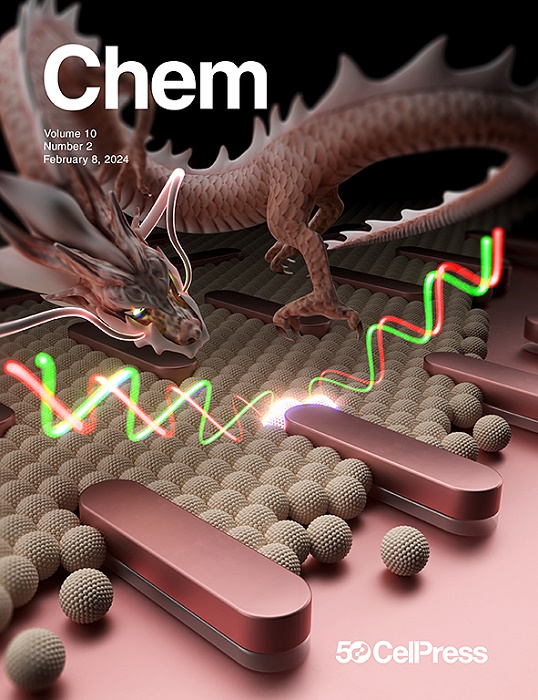Chemical space-property predictor model of perovskite materials by high-throughput synthesis and artificial neural networks
IF 19.1
1区 化学
Q1 CHEMISTRY, MULTIDISCIPLINARY
引用次数: 0
Abstract
Lead-halide perovskites exhibit highly tunable optical properties, making them suitable for applications in photovoltaics and optoelectronics. Although considerable effort has gone into the development of methods that accurately predict the optical properties of perovskite materials based on structure, the reverse—predicting composition from optical data—is far less explored. In this study, high-throughput approaches were employed to synthesize and spectroscopically analyze a wide array of perovskites composed of mono-halide, di-halide, and tri-halides with a general formula, MAxCs1−xPb(ClxBryI1−x−y)3. The spectroscopic data were used to train an artificial neural network (ANN)-based chemical space-property predictor model designed to work with multiple responses and multiple predictors. The model predicted the chemical composition of perovskites from terahertz (THz) Raman spectroscopic data with approximately 85% accuracy. When the dataset also incorporated UV-visible spectroscopic data, the accuracy increased to nearly 92%. This study opens the possibility of real-time monitoring and defect detection, degradation analysis, and streamlined material selection and optimization of perovskite materials in industrial production.


基于高通量合成和人工神经网络的钙钛矿材料化学空间性质预测模型
卤化铅钙钛矿具有高度可调的光学特性,使其适用于光伏和光电子学的应用。尽管在开发基于结构准确预测钙钛矿材料光学性质的方法方面已经付出了相当大的努力,但从光学数据中反向预测成分的探索还远远不够。在这项研究中,采用高通量方法合成和光谱分析了一系列由单卤化物、二卤化物和三卤化物组成的钙钛矿,其通式为MAxCs1−xPb(ClxBryI1−x−y)3。光谱数据用于训练基于人工神经网络(ANN)的化学空间性质预测模型,该模型设计用于处理多个响应和多个预测因子。该模型从太赫兹(THz)拉曼光谱数据预测钙钛矿的化学成分,准确度约为85%。当数据集还包含紫外可见光谱数据时,精度提高到近92%。本研究为钙钛矿材料在工业生产中的实时监测和缺陷检测、降解分析、流线型材料选择和优化提供了可能性。
本文章由计算机程序翻译,如有差异,请以英文原文为准。
求助全文
约1分钟内获得全文
求助全文
来源期刊

Chem
Environmental Science-Environmental Chemistry
CiteScore
32.40
自引率
1.30%
发文量
281
期刊介绍:
Chem, affiliated with Cell as its sister journal, serves as a platform for groundbreaking research and illustrates how fundamental inquiries in chemistry and its related fields can contribute to addressing future global challenges. It was established in 2016, and is currently edited by Robert Eagling.
 求助内容:
求助内容: 应助结果提醒方式:
应助结果提醒方式:


